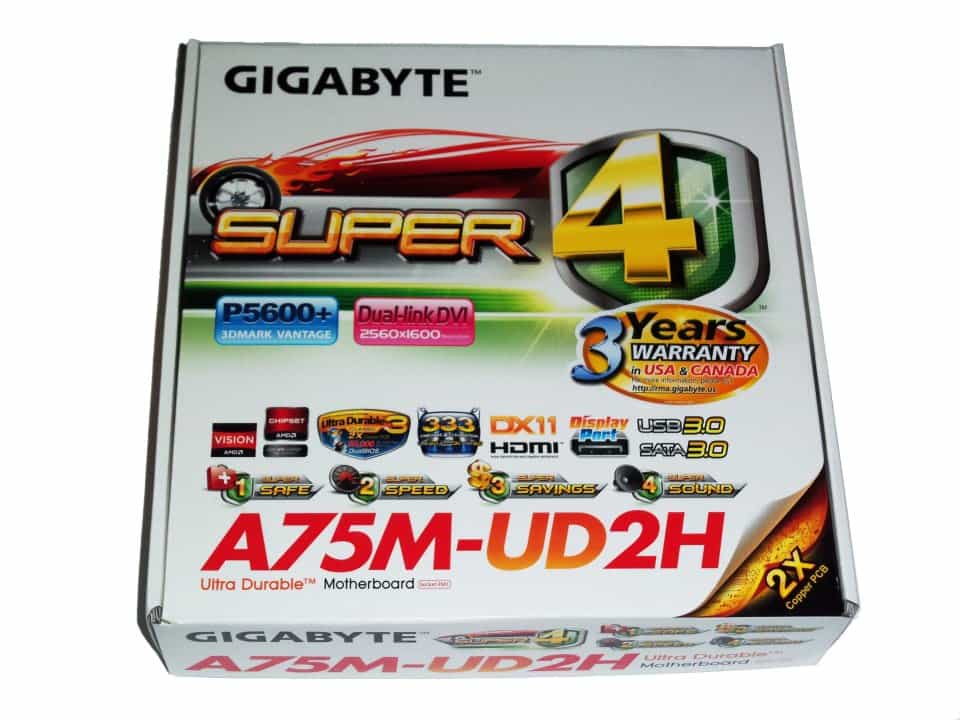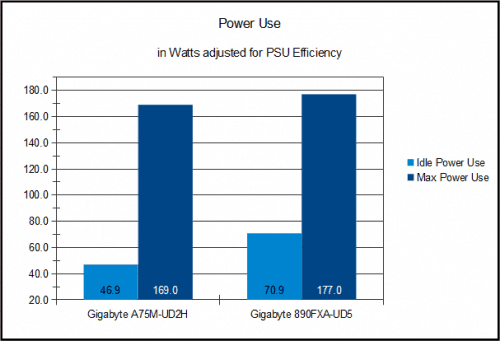RightMark Audio Analyzer 6.2.3
These tests were done with an audio crossover from the stereo out to the mic in jack on each board as per the instructions provided by this benchmark. The quality of on-board audio on a motherboard is important since replacing it with a dedicated audio card is slightly to a lot more expensive depending on the quality level you want to achieve. It also uses up an available expansion slot. Most users will be using the on-board audio, especially those on a budget who would likely choose an APU setup for its value proposition.
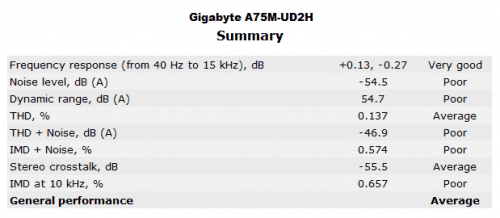
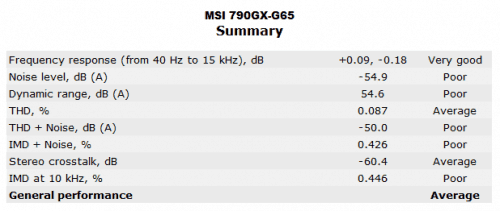
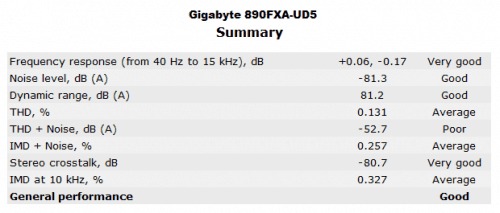
I can’t say I am surprised with the results. I included the MSI 790GX-65 as it was a mid-range board like the GIGABYTE A75M-UD2H. The primary weakness is the microATX size of the A75M-UD2H limits space available for audio capacitors. All three of these motherboards use the same Realtek ALC 889 audio codec and only differ in the number of audio caps. The MSI 790GX opted for less caps to cut cost to the end-user, while the A75M simply did not have enough room for the option of more caps. Hence the average performance of the two boards vs the larger 890FXA-UD5.
Power Consumption
This test was done with OCCT stressing the CPUs and FurMark Burn-in test stressing the GIGABYTE HD 6670. The most power hungry task someone may use their system for is Fold@Home. The FurMark and OCCT allow me to simulate this by using both the APUs CPU core and the HD 6670 maxed out, drawing as much power as the systems will allow. Note that gaming with these systems will use much less power. The standard operational voltage for my A8-3850 is 1.4V and the PII 1100T is 1.35V.
The Gigabyte A75M-UD2H + APU unsurprisingly uses less power. While only an 8 watt difference at maximum, there is a 24 watt difference at idle. This is due to a better power management and lack of a dedicated Northbridge chip in the APU system. If you would like to see more details about power use for the GIGABYTE A75M-UD2H + an APU, refer to my APU review. There you can see power use for this board in various configurations.
Final Thoughts
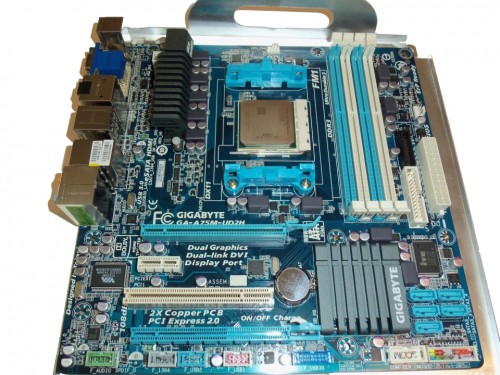
The GIGABYTE A75M-UD2H was great to work with most of the time. Once you have your system set in the BIOS the way you want, it is easily one of the faster booting systems I have seen. POST, AHCI HDD detection, and S.M.A.R.T. are all much faster on this motherboard. This can be a double edge sword as responding to me pressing “delete” to enter the BIOS would occasionally be missed. Holding or rapidly pressing “delete” made no difference. But for most users considering this platform, set and forget will probably be the order of the day when it comes to settings in BIOS.
The MSRP of $109.99 US puts the A75M-UD2H right in the middle of FM1 socket boards. The feature that separates this board from the pack is the built-in dividers for the bus which made overclocking almost too easy. While we did not cover overclocking specifically in this review, we have covered it in our review of AMD’s new APUs, the A8-3850 and A6-3650 for the A75 Platform. It’ll take you through everything you’ll want to know about what makes this platform special and more.
Overclocking aside, this platform was built for the mass market of casual gamers, and not so much the enthusiasts. If you need a low power, low noise, everyday “daily driver” computer, an affordable microATX HTPC board, or are simply on a tight budget and want as much computing as possible, a computer built on the AMD A75 platform with this board would be a great buy. GIGABYTE has done a great job interpreting what the A75 platform represents and complementing it with several of their own great features.
Pros:
- Well Designed Board Layout
- Extremely Easy Overclocking
- Low Idle Power Use
- One of Each Display Output (HDMI, DP, DVI, VGA)
Cons:
- Outdated non-GUI BIOS
- EasyTune6 Often Requires a Restart to change settings
Overall Rating: 8.5/10.0

Help Us Improve Our Reviews By Leaving a Comment Below!

